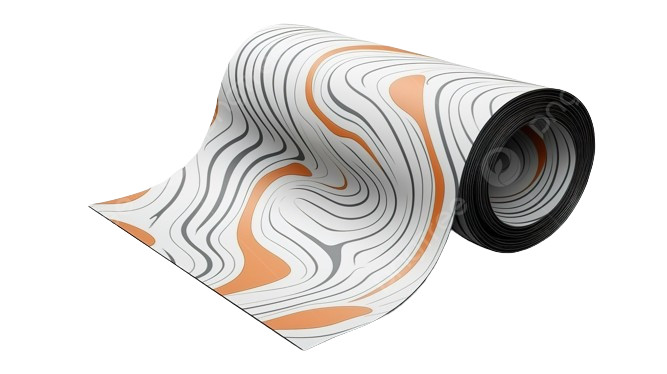FORMALDEHYDE
LOW-COST WOODEN FLOOR: CANCER RISK IN THE DARK
Because the dispersion cycle of formaldehyde in laminate flooring can last up to 15 years, the WHO classifies it as a toxic substance for human health. They are constantly progressing and accumulating, causing respiratory diseases, leukemia, and, more dangerously, cancer. As a result, when selecting furniture in general or flooring for the home in particular, you must consider whether the product contains harmful adhesive additives, particularly formaldehyde.

I. Formaldehyde and Dangerous Health Effects
1. What is formaldehyde?
Formaldehyde is a colorless, volatile organic compound that, under normal conditions, can turn into a gas. This chemical has a strong, unpleasant odor and is highly soluble in water (this solution is known as formal or formalin if it is 40% by volume or 37% by weight). This substance, which has the chemical formula H2CO, is commonly found in a variety of liquid solutions.


In practice, formaldehyde is used in a variety of applications, including mortuary laboratory preservatives, household products, glue, anti-wrinkle fabrics, paper coatings, pesticides, drugs, antiseptics, and industrial wood products. When users use glue products containing formaldehyde and inhale this toxic gas, they may experience symptoms such as stinging noses, stinging eyes, headaches, and chest tightness. Worryingly, this chemical exists. It floats in the air and has a dispersal cycle that lasts between 3 and 15 years.
2. Formaldehyde's Negative Health Effects
Although formaldehyde is still classified as a group 3 substance in Europe, the International Agency for Research on Cancer (IARC) has moved this chemical from group 3 to group 1 (a substance that can cause cancer). The impact of this chemical on the human body will differ depending on the stage. When formaldehyde is first inhaled, it causes irritation in the eyes and mucous membranes, resulting in watery eyes, headaches, a burning sensation in the throat, and difficulty breathing. After inhaling formaldehyde for an extended period of time, this chemical will have the ability to cause protein particles to bind irreversibly to DNA.


This amine reaction produces toxic chemicals that cause skin inflammation, inflammation of the lining of the lungs, and organ damage. Because the molecules of this chemical are so small, they can pass through the skin and into the bloodstream, causing the blood to produce toxic compounds that, if accumulated over time, can harm cells, cause cancer, and have other negative effects on the body. Anomalies in human health include abnormal changes in the sense of smell, an itchy nose, allergies, lung function, liver function, and immunity. It is worth noting that the human body lacks a mechanism for eliminating formaldehyde.
III. Formaldehyde is found in low-cost wooden floors
If you get a headache, stinging eyes, or a stinging nose every time you come into contact with wooden furniture or laminate flooring because the scent is pungent or smelly, mold can be found on the utensils at times. This means you are putting your health at risk because those interior products contain or have high levels of formaldehyde.
1. Why is formaldehyde present in laminate floors?

Cashew industrial wood products are typically made by grinding forest trees, then mixing them with glue and pressing to create thickness. Glues such as UF and PF, whose main ingredient is formaldehyde, are used. Has the effect of binding with wood cellulose, resulting in durability. Furthermore, the formaldehyde component in glue has strong adhesive properties, increasing hardness, corrosion resistance, termite resistance, and shape retention, resulting in a solid board. As a result, it is widely used in the manufacture of industrial wood panels. The formaldehyde component will vary depending on the type of glue.

Although the chemical's pungent odor does not last long, it will evaporate and fade over time, making it impossible for us to identify it. However, it does not vanish; rather, it is hidden deep within each wood structure. It takes about 15 years to vanish, so it infiltrates the human body quietly.
2. Choose high-quality wooden floors
To reduce the risk of contact with formaldehyde-containing furniture or floors, wear specialized gloves, glasses, and protective masks. We should limit the use of industrial wood in household items, cabinets, and floors because it contains formaldehyde to varying degrees. Products of natural origin or those labeled "formaldehyde-free" should be prioritized.

EIDAI's main product lines include natural wood flooring, natural engineered wood flooring, and olefin-engineered wood flooring, which are primarily sold in the Japanese market. EIDAI Vietnam wooden flooring is invested in modern technology lines and strict quality control in accordance with Japanese technical standards, with the goal of providing customers with peace of mind and the most authentic experiences. EIDAI's naturally engineered wood floors, like natural wood floors, are made from precious woods imported from Europe and America, with wood types such as walnut, cherry, hard maple wood, red oak, and so on.
Eidai's natural engineered wood floors have three distinct features:
- The surface is made of genuine, natural wood.
- The wood layer beneath is plywood imported from Indonesia and Malaysia, which minimizes changes in weather and environment and has a very low formaldehyde content, making it safe for the user's health.
- Manufactured based on special Japanese technology, wooden floors are less prone to warping, shrinking, etc.
ADORN MUSEUM
Location: O-1, TM.01, 1st Floor, Orchid 1 Tower, Hado Centrosa Garden No.200 3/2 Street, Ward 12, District 10, Ho Chi Minh City, Viet Nam.
Hotline: (+84) 28 3930 3428
E-mail: support@adornmuseum.com
Operation time:
8:30 - 17:30, Monday - Friday & 8:30 - 12:00, Saturday










































